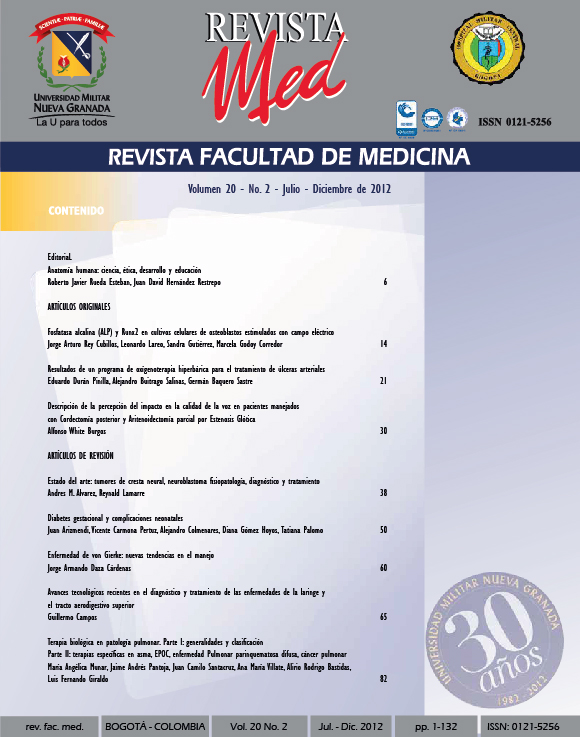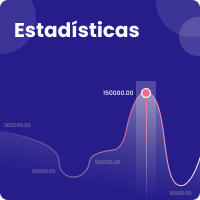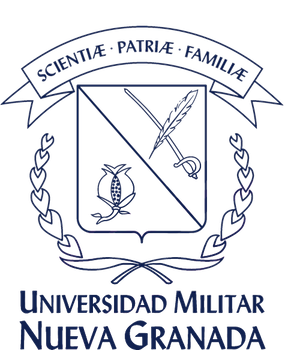Estado del arte: tumores de cresta neural, neuroblastoma fisiopatología, diagnóstico y tratamiento
Resumen
El neuroblastoma es el tumor sólido extracraneal más frecuente en la infancia, con incidencia de 650 casos al año en los Estados Unidos de America y 100 casos por año en Italia y España. Se trata de un tumor que evoluciona de forma variable, desde la regresión espontánea hasta un comportamiento muy maligno, sobre todo en niños en edades mayores y con la existencia de enfermedad diseminada. Los signos y síntomas de presentación del neuroblastoma reflejan la localización del tumor y debido a las múltiples presentaciones clínicas, puede confundirse con gran variedad de patologías. Su tratamiento incluye la cirugía, la quimioterapia, la radioterapia y la terapia inmunológica. El papel de cada uno se determina anticipando el comportamiento clínico del tumor en cada caso, considerando la edad, el estadio y determinados parámetros biológicos. En los últimos 10 años, la estratificación por grupos de riesgo de los pacientes con neuroblastoma, basada en el análisis de un panel amplio de variables clínicas y biológicas, entre las que destacan la edad, el estadio y la amplificación del N-MYC, ha permitido un diagnóstico temprano y nuevas pautas para una mejoría importante en su tratamiento. El tratamiento del neuroblastoma se diseña hoy en día según grupos de riesgo, que se definen por parámetros clínicos y biológicos cada vez más sofisticados. El mejor conocimiento de la biología del neuroblastoma ha permitido distinguir entre aquellos tumores que pueden curarse con un tratamiento mínimo y los que requieren de un tratamiento multidisciplinario y complejo para tener posibilidades de curación. Es fundamental realizar al diagnóstico temprano con indicaciones de estadio y desarrollo de una terapia oportuna.Descargas
Lenguajes:
esReferencias bibliográficas
Carrasquillo JA, Pandit-Taskar N, Chen CC. Radionuclide therapy of adrenal tumors. J Surg Oncol. 2012 Jun; 20.
Asgharzadeh S, Pique-Regi R, Sposto R, et al. Prognostic significance of gene expression profiles of metastatic neuroblastomas lacking MYCN gene amplification. J Natl Cancer Inst. 2006; 98: 1193-203.
Pardal R, Clarke MF, Morrison SJ. Applying the principles of stem-cell biology to cancer. Nat Rev Cancer. 2003; 3: 895-902.
Vescovi AL, Galli R, Reynolds BA. Brain tumour stem cells. Nat Rev Cancer. 2006; 6: 425-36.
Bown N. Neuroblastoma tumour genetics: Clinical and biological aspects. JClin Pathol. 2001; 54: 897-910.
Brodeur GM. Neuroblastoma: biological insights into a clinical enigma. Nature eviews/cancer. 2003; 3: 203-16.
Brodeur GM, Maris JM. Neuroblastoma. En: Pizzo PA, Poplack DG, Eds. Principles and Practice of Pediatric Oncology. 4ª ed. Philadelphia: Lippincott Williams & Wilkins; 2001.
López-Ibor B, Moreno L. Tumores de cresta neural. Hematología y oncología ediátricas. Madero López L, Muñoz Villa A. Madrid: Ergon; 2006.
Simon T, Hero B, Benz-Bohm G, Von Schweinitz D, Berthold F. Review of image defined risk factors in localized neuroblastoma patients. Results of the GPOH NB97 Trial. Pediatr Blood Cancer 2008; 50 (5): 965-9.
Paramasivam A, Sambantham S, Shabnam J, et al. Anti-cancer effects of thymoquinone in mouse neuroblastoma (Neuro-2a) cells through caspase-3 activation with down-regulation of XIAP. Toxicol Lett. 2012 Jun 22.
Lee MH, Yoo SY, Kim JH, et al. Hypervascular hepatic nodules in childhood cancer survivors: clinical and imaging features. Clin Imaging. 2012 Jul; 36(4): 301-7.
Zwaveling S, Tytgat GA, van der Zee DC, et al. Is complete surgical resection of stage 4 neuroblastoma a prerequisite for optimal survival or may >95 % tumour resection suffice? PediatrSurg Int. 2012 Jun 22.
Grosfeld JL. Risk-based management of solid tumors in children. Am J Surg. 2000 Nov; 180: 322-7.
Berthold F, Hero B. Neuroblastoma: current drug therapy recommendations as part of the total treatment approach. Drugs.
Jun; 59 (6): 1261-77.
Cheung NV, Kushner BH, Kramer K. Monoclonal antibodybased therapy of neuroblastoma. Hematol Oncol Clin North
Am. 2001 Oct; 15 (5): 853-66.
Matthay KK, Villablanca JG, Seeger RC, Stram DO, Harris RE, Ramsay NK, et al. Treatment of high-risk neuroblastoma with intensive chemotherapy, radiotherapy, autologous bone marrow transplantation, and 13-cis-retinoic acid. N Engl J Med. 1999 Oct 14; 341 (16): 1165-73.
Hoefnagel CA. Nuclear Medicine Therapy of Neuroblastoma. Q J Nucl Med. 1999 Dec; 43: 336-43.
Evans AE, D’Angio GJ, Sather HN, de Lorimer AA, Dalton A, Ungerleider RS, et al. A comparison of four staging systems for localized and regional neuroblastoma: a report from the children’s cancer study group. J Clin Onc. 1990 Apr; 8 (4): 678-688.
Partrick D, Bensar D, Geiger, JD, Teitelbaum, DH. Successful throacoscopic lung biopsy in children utilizing preoperative CT-guided localization. J Pediatr Surg. 2002; 37(7): 970-973.
Geiger JD, Hutchinson RJ, Hohenkirk LF, McKenna EA, Yanik GA, Levine JE, et al. Vvaccination of pediatric solid tumor patients with tumor lysate-pulsed dendritic cells can expand specific t cells and mediate tumor regression. Cancer Research. 2001; 61, 8513-8519.
Hemmila MR, Foley DS, Castle VP, Hirschl RB. The response to splenectomy in pediatric patients with ideopathic thrombocytopenic purpura who fail high-dose intravenous immune globulin. J Ped Surg. 2000; 35(6): 967-72.
Azizkhan RG, Rescorla FJ, Haase GM, Applebaum H, Dillon PW, Coran AG, et al. Diagnosis, management and outcome of teratomas in neonates and infants: a multi-institutional study. Paediatr Croat. 1999; 43: 163-171.
Barnhart DC, Hirschl RB, Garver KA, Geiger JD, Harmon CM, Coran AG. Conservative management of mesenchymal hamartoma of the liver. J Ped Surg. 1997; 32:1495-1498.
Geiger JD. Surgery for hepatoblastoma in children, current opinion in pediatrics, 1996; 8(3)282-290.
Dillion P, Whalen T, Azizkhan R, Haase G, Coran AG, King D, Smith M. Neonatal soft tissue sarcomas: The influence of pathology on treatment and survival. J Ped Surg. 1995; 30: 1038-1041.
Geiger JD, Hutchinson RJ, Hohenkirk LF, McKenna E, Chang A, Mul, J. Treatment of solid tumours in children with tumour lysate-pulsed dendritic cells. The Lancet. 2000; 356(9236): 1163-1164.
Schmeling DJ, Coran AG. Wilms’ Tumor (Nephroblastoma). Pediatric Rounds 1988; 8:3-5.
Evans AE, D’Angio GJ, Randolph J. A proposed staging for children with neuroblastoma: Children’s Cancer Study Group A. Cancer. 1971; 27: 374-378.
Wilson LM, Draper GJ. Neuroblastoma, its natural history and prognosis: A study of 487 cases. BMJ. 1974; 3: 301-307.
Shimada H, Chatten J, Newton WA Jr, et al. Histopathologic prognostic factors in neuroblastic tumors: Definition of subtypes of ganglioneuroblastoma and an age-linked classification of neuroblastomas. J Natl Cancer Inst. 1984; 73: 405-416.
Brodeur GM, Seeger RC, Schwab M, et al. Amplification of N-myc in untreated human neuroblastomas correlates with advanced disease stage. Science. 1984; 224: 1121-1124.
Seeger RC, Brodeur GM, Sather H, et al. Association of multiple copies of the N-myc oncogene with rapid progression of neuroblastomas. N Engl J Med.1985; 313: 1111-1116.
Kushner BH, Cheung NK, LaQuaglia MP, et al. International neuroblastoma staging system stage 1 neuroblastoma: A prospective study and literature review. J Clin Oncol. 1996; 14: 2174-2180.
Nitschke R, Smith EI, Shochat S, et al. Localized neuroblastoma treated by surgery: A Pediatric Oncology Group study. J Clin Oncol. 1988; 6: 1271-1279.
Alvarado CS, London WB, Look AT, et al. Natural history and biology of stage A neuroblastoma: A Pediatric Oncology Group study. J Pediatr Hematol Oncol. 2000; 22: 197-205.
Perez CA, Matthay KK, Atkinson JB, et al. Biologic variables in the outcome of stages I and II neuroblastoma treated with surgery as primary therapy: A Children’s Cancer Group study. J Clin Oncol. 2000; 18: 18-26.
Matthay KK, Villablanca JG, Seeger RC, et al. Treatment of highrisk neuroblastoma with intensive chemotherapy, radiotherapy, autologous bone marrow transplantation, and 13-cis-retinoic acid: Children’s Cancer Group. N Engl J Med. 1999; 341: 1165-1173.
Bowman LC, Castleberry RP, Cantor A, et al. Genetic staging of unresectable or metastatic neuroblastoma in infants: A Pediatric Oncology Group study. J Natl Cancer Inst. 1997; 89: 373-380.
Schmidt ML, Lukens JN, Seeger RC, et al. Biologic factors determine prognosis in infants with stage IV neuroblastoma:
A prospective Children’s Cancer Group study. J Clin Oncol. 2000; 18: 1260-1268.
Schwab M, Alitalo K, Klempnauer KH, et al. Amplified DNA with limited homology to myc cellular oncogene is shared by human neuroblastoma cell lines and a neuroblastoma tumour. Nature. 1983; 305:245-248.
Shapiro DN, Valentine MB, Rowe ST, et al. Detection of N-myc gene amplification by fluorescence in situ hybridization: Diagnostic utility for neuroblastoma. American J Pathol. 1993; 142: 1339-1346.
Look AT, Hayes FA, Nitschke R, et al. Cellular DNA content as a predictor of response to chemotherapy in infants with unresectable neuroblastoma. N Engl J Med. 1984; 311: 231-235.
Brodeur GM, Pritchard J, Berthold F, et al. Revisions of the international criteria for neuroblastoma diagnosis, staging, and response to treatment. J Clin Oncol. 1993; 11: 1466-1477.
Kaplan EL, Meier P. Nonparametric estimation from incomplete observations. J Am Stat Assoc. 1958; 53: 457-481.
Matthay KK, Perez C, Seeger RC, et al. Successful treatment of stage III neuroblastoma based on prospective biologic staging: A Children’s Cancer Group study. J Clin Oncol. 1998: 16: 1256-1264.
Kushner BH, Cheung NK, LaQuaglia MP, et al. Survival from locally invasive or widespread neuroblastoma without cytotoxic therapy. J Clin Oncol. 1996; 14: 373-381.
Cheung NK, Kushner BH, LaQuaglia MP, et al. Survival from non-stage 4 neuroblastoma without cytotoxic therapy: An analy sis of clinical and biological markers. Eur J Cancer. 1997; 33: 2117-2120.
Kushner BH, Kramer K, LaQuaglia MP, et al. Curability of recurrent disseminated disease after surgery alone for local-regional neuroblastoma using intensive chemotherapy and anti-G(D2) immunotherapy. J Pediatr Hematol Oncol. 2003; 25: 515-519.
Evans AE, Silber JH, Shpilsky A, et al. Successful management of low-stage neuroblastoma without adjuvant therapies: A comparison of two decades, 1972 through 1981 and 1982 through
, in a single institution. J Clin Oncol. 1996; 14: 2504-2510.
Matthay KK, Sather HN, Seeger RC, et al. Excellent outcome of stage II neuroblastoma is independent of residual disease and radiation therapy. J Clin Oncol. 1989; 7: 236-244.
De Bernardi B, Conte M, Mancini A, et al. Localized resectable neuroblastoma: Results of the second study of the Italian Cooperative Group for Neuroblastoma. J Clin Oncol. 1995; 13: 884-893.
Castleberry RP, Cantor AB, Green AA, et al. Phase II investigational window using carboplatin, iproplatin, ifosfamide, and epirubicin in children with untreated disseminated neuroblastoma: A Pediatric Oncology Group study. J Clin Oncol. 1994; 12: 1616-1620.
Pinkerton CR, Zucker JM, Hartmann O, et al. Short duration, high dose, alternating chemotherapy in metastatic neuroblastoma: ENSG 3C induction regimen -The European Neuroblastoma Study Group. Br J Cancer.1990; 62: 319-323.
Campbell LA, Seeger RC, Harris RE, et al. Escalating dose of continuous infusion combination chemotherapy for refractory neuroblastoma. J Clin Oncol. 1993; 11: 623-629.
Bass AJ, Watanabe H, Mermel CH, Yu S, Perner S, Verhaak RG, et al. SOX2 is an amplified lineage-survival oncogene
in lung and esophageal squamous cell carcinomas. Nat Genet. 2009; 41: 1238-42.
Gangemi RM,Griffero F, Marubbi D, Perera M,Capra MC, Malatesta P, et al. SOX2 silencing in glioblastoma tumor-initiating
cells causes stop of proliferation and loss of tumorigenicity. Stem Cells. 2009; 27: 40-8.
Rodriguez-Pinilla SM, Sarrio D, Moreno-Bueno G, Rodriguezil Y, Martinez MA,Hernandez L, et al. Sox2: a possible driver of the basal-like phenotype in sporadic breast cancer. Mod Pathol. 2007; 20: 474-81.
Phi JH, Park SH, Kim SK, Paek SH, Kim JH, Lee YJ, et al. Sox2 expression in brain tumors: a reflection of the neuroglial differentiation pathway. Am J Surg Pathol. 2008; 32: 103-12.
Riggi N, Suva ML, De Vito C, Provero P, Stehle JC, Baumer K, et al. EWS-FLI-1 modulates miRNA145 and SOX2 expression to initiate mesenchymal stem cell reprogramming toward Ewing sarcoma cancer stem cells. Genes Dev 2010; 24: 916-32.
Kim Y, Lin Q, Zelterman D, Yun Z . Hypoxia-regulated delta-like 1 homologue enhances cancer cell stemness and tumorigenicity. Cancer Res. 2009; 69: 9271-80.
Melone MA, Giuliano M, Squillaro T, Alessio N, Casale F, Mattioli E, et al. Genes involved in regulation of stem cell properties: studies on their expression in a small cohort of neuroblastoma patients. Cancer Biol Ther. 2009; 8: 1300-6.
Carlsson P, Mahlapuu M . Forkhead transcription factors: key players in development and metabolism. Dev Biol. 2002; 250: 1-23.
Kalin TV, Wang IC, Ackerson TJ, Major ML, Detrisac CJ, Kalinichenko VV, et al. Increased levels of the FoxM1 transcription factor accelerate development and progression of prostate carcinomas in both TRAMP and LADY transgenic mice. Cancer Res. 2006; 66: 1712-20.
Liu M, Dai B, Kang SH, Ban K, Huang FJ, Lang FF, et al. Fox- M1B is overexpressed in human glioblastomas and critically regulates the tumorigenicity of glioma cells. Cancer Res. 2006; 66: 3593-602.
Major ML, Lepe R, Costa RH. Forkhead box M1B transcriptional activity requires binding of Cdk-cyclin complexes for phosphorylation- dependent recruitment of p300/CBP coactivators. Mol Cell Biol. 2004; 24: 2649-61.
Albino D, Scaruffi P, Moretti S, Coco S, Truini M, Di Cristofano C, et al. Identification of low intratumoral gene expression heterogeneity in neuroblastic tumors by genome-wide expression analysis and game theory. Cancer. 2008; 113: 1412-22.
De Preter K, Vandesompele J, Heimann P, et al. Human fetal neuroblast and neuroblastoma transcriptome analysis confirms neuroblast origin and highlights neuroblastoma candidate genes. Genome Biol. 2006; 7: R84.
Lamb J, Crawford ED, Peck D, et al. The Connectivity Map: using gene-expression signatures to connect small molecules, genes, and disease. Science. 2006; 313: 1929-35.
Wang Q, Diskin S, Rappaport E, et al. Integrative genomics identifies distinct molecular classes of neuroblastoma and shows that multiple genes are targeted by regional alterations in DNA copy number. Cancer Res. 2006; 66: 6050-62.
McArdle L, McDermott M, Purcell R, et al. Oligonucleotide microarray analysis of gene expression in neuroblastoma displaying loss of chromosome 11q. Carcinogenesis. 2004; 25: 1599-609.
Gentleman RC, Carey VJ, Bates DM, et al. Bioconductor: open software development for computational biology and bioinformatics. Genome Biol. 2004; 5: R80.
Tusher VG, Tibshirani R, Chu G. Significance analysis of microarrays applied to the ionizing radiation response. Proc Natl Acad Sci U S A. 2001; 98: 5116-21.
Breitling R, Armengaud P, Amtmann A, Herzyk P. Rank products: a simple, yet powerful, new method to detect differentially regulated genes in replicated microarray experiments. FEBS Lett. 2004; 573: 83-92.
De Preter K, Barriot R, Speleman F, Vandesompele J, Moreau Y. Positional gene enrichment analysis of gene sets for high-resolution identification of overrepresented chromosomal regions. Nucleic Acids Res. 2008; 36: e43.
Subramanian A, Tamayo P, Mootha VK, et al. Gene set enrichment analysis: a knowledge-based approach for interpreting genome-wide expression profiles. Proc Natl Acad Sci U S A. 2005; 102: 15545-50.
Muhlethaler-Mottet A, Meier R, Flahaut M, et al. Complex molecular mechanisms cooperate to mediate histone deacetylase inhibitors anti-tumour activity in neuroblastoma cells. Mol Cancer. 2008; 7: 55.
Johnsen JI, Segerstrom L, Orrego A, et al. Inhibitors of mammalian target of rapamycin downregulate MYCN protein expression and inhibit neuroblastoma growthin vitro and in vivo. Oncogene. 2008; 27: 2910-22.
Al Shaer L, Walsby E, Gilkes A, et al. Heat shock protein 90 inhibition is cytotoxic to primary AML cells expressing mutant FLT3 and results in altered downstream signalling. Br J Haematol. 2008; 141: 483-93.
Ryhanen T, Mannermaa E, Oksala N, et al. Radicicol but not geldanamycin evokes oxidative stress response and efflux protein inhibition in ARPE-19 human retinal pigment epithelial cells. Eur J Pharmacol. 2008; 584: 229-36.
Lefever S, Vandesompele J, Speleman F, Pattyn F. RTPrimerDB: the portal for real-time PCR primers and probes. Nucleic Acids Res. 2009; 37: D942-5.
Pattyn F, Robbrecht P, De Paepe A, Speleman F, Vandesompele J. RTPrimerDB: the real-time PCR primer and probe database, major update 2006. Nucleic Acids Res. 2006; 34: D684-8.
Pattyn F, Speleman F, De Paepe A, Vandesompele J. RTPrimerDB: the real-time PCR primer and probe database. Nucleic Acids Res. 2003; 31: 122-3.
Hellemans J, Mortier G, De Paepe A, Speleman F, Vandesompele J. qBase relative quantification framework and software for management and automated analysis of real-time quantitative PCR data. Genome Biol. 2007; 8: R19.
Vandesompele J, De Preter K, Pattyn F, et al. Accurate normalization of real-time quantitative RT-PCR data by geometric averaging of multiple internal control genes. Genome Biol. 2002; 3: RESEARCH0034.
Mosse YP, Diskin SJ, Wasserman N, et al. Neuroblastomas have distinct genomic DNA profiles that predict clinical phenotype and regional gene expression.Genes Chromosomes Cancer. 2007; 46: 936-49.
Tibshirani R, Hastie T, Narasimhan B, Chu G. Diagnosis of multiple cancer types by shrunken centroids of gene expression. Proc Natl Acad Sci U S A. 2002; 99: 6567-72.
Janoueix-Lerosey I, Novikov E, Monteiro M, et al. Gene expression profiling of 1p35-36 genes in neuroblastoma. Oncogene. 2004; 23: 5912-22.
Lastowska M, Viprey V, Santibanez-Koref M, et al. Identification of candidate genes involved in neuroblastoma progression by combining genomic and expression microarrays with survival data. Oncogene. 2007; 26: 7432-44.
Falini B, Mecucci C, Tiacci E, et al. Cytoplasmic nucleophosmin in acute myelogenous leukemia with a normal karyotype. NEngl J Med. 2005; 352: 254-66.
Minucci S, Pelicci PG. Histone deacetylase inhibitors and the promise of epigenetic (and more) treatments for cancer. Nat Rev Cancer. 2006; 6: 38-51.
Tang XX, Robinson ME, Riceberg JS, et al. Favorable neuroblastoma genes and molecular therapeutics of neuroblastoma. Clin Cancer Res. 2004; 10: 5837-44.
Hahn CK, Ross KN, Warrington IM, et al. Expression-based screening identifies the combination of histone deacetylase inhibitors and retinoids for neuroblastoma differentiation. Proc Natl Acad Sci U S A. 2008; 105: 9751-6.
Kang J, Kamal A, Burrows FJ, Evers BM, Chung DH. Inhibition of neuroblastoma xenograft growth by Hsp90 inhibitors. Anticancer Res. 2006; 26: 1903-8.
Bagatell R, Beliakoff J, David CL, Marron MT, Whitesell L. Hsp90 inhibitors deplete key anti-apoptotic proteins in pediatric solid tumor cells and demonstrate synergistic anticancer activity with cisplatin. Int J Cancer. 2005; 113: 179-88.
Bagatell R, Gore L, Egorin MJ, et al. Phase I pharmacokinetic and pharmacodynamic study of 17-N-allylamino-17-demethoxygeldanamycin in pediatric patients with recurrent or refractory solid tumors: a pediatric oncology experimental therapeutics investigators consortium study. Clin Cancer Res. 2007; 13: 1783-8.
Sharma SV, Agatsuma T, Nakano H. Targeting of the protein chaperone, HSP90, by the transformation suppressing agent,
radicicol. Oncogene. 1998; 16: 2639-45.
Misawa A, Hosoi H, Tsuchiya K, Sugimoto T. Rapamycin inhibits proliferation of human neuroblastoma cells without suppression of MycN. Int J Cancer. 2003; 104: 233-7.
Gil-Ad I, Shtaif B, Levkovitz Y, Dayag M, Zeldich E, Weizman A. Characterization of phenothiazine-induced apoptosis in neuroblastoma and glioma cell lines: clinical relevance and possible application for brain-derived tumors. J Mol Neurosci.
; 22: 189-98.
Yang J, Shamji A, Matchacheep S, Schreiber SL. Identification of a small-molecule inhibitor of class Ia PI3Ks with cell-based screening. Chem Biol. 2007; 14: 371-7.
Marone R, Cmiljanovic V, Giese B, Wymann MP. Targeting phosphoinositide 3-kinase: moving towards therapy. Biochim Biophys Acta. 2008; 1784: 159-85.







.png)





